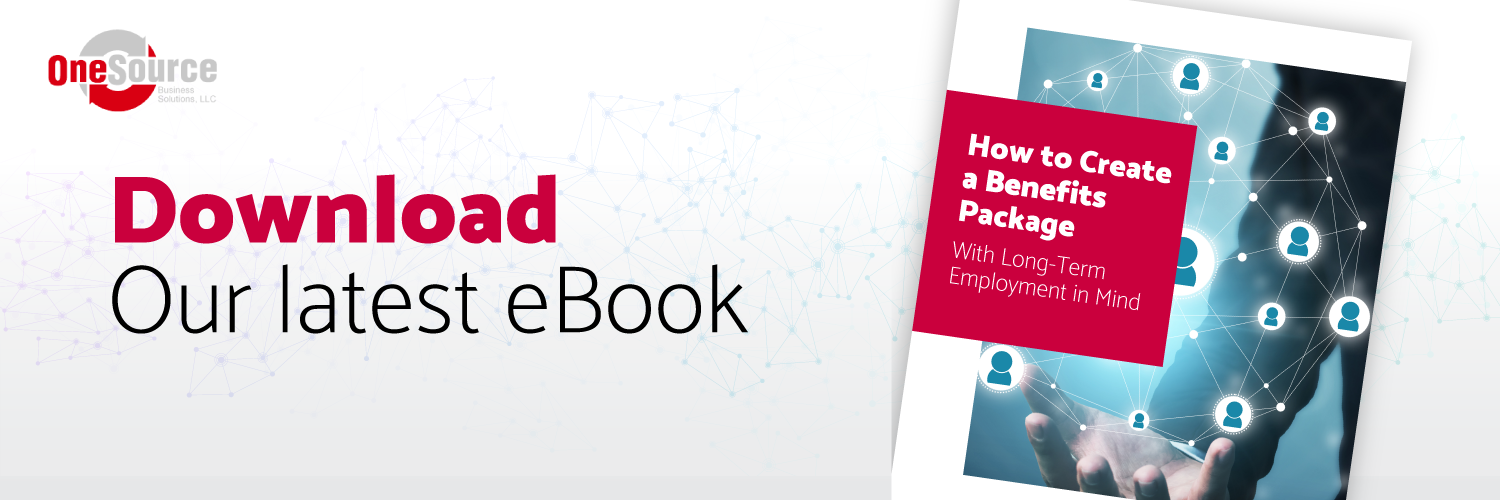OneSource Business Solutions Blog
How to Attract Employees with Benefits

Great benefits are the best way to attract top talent to your company. However, this only works if candidates are aware that these benefits exist.
In addition to making sure that your benefits are competitive, you need to come up with ways to communicate this to candidates. The three main channels are your existing employees, the internet, and during job interviews. Your benefits are almost as important as salary in attracting top talent and should be advertised and marketed to the same degree.
How to Attract With Benefits
You have partnered with a professional employer organization to get your employees great benefits. Now you need to use those benefits to attract the talent your business deserves. Here are the three main ways to do so:
Attract Using Existing Employees
All companies should have an employee referral program. Employee referral programs have been demonstrated to lower hiring costs and improve the quality of candidates hired. Plain and simple: Employees tend to refer people they like, which means they are more likely to be a fit for your company. This can reduce diversity, but does help build company culture. New hires that come in through referral programs are more likely to stick around, more likely to support your company culture rather than go against it, and already have a personal connection to the company.
Make sure that your employee referral program is easy to use and doesn't overly limit who can make recommendations. A good applicant tracking system helps keep everything organized. And, of course, make sure that everyone in the business knows about it. When you post an opening, forward it to everyone in the company through email and ask if they know anyone who might be a good fit. Gently remind employees of the selling points of working for you, including benefits. Often this will come up naturally when employees talk to friends, former coworkers, etc. Referred candidates may also be familiar with benefits from previous conversations about, for example, vacation and sick time.
Attract Using the Web
Mentioning your benefits package on your website is good, but generally not sufficient on its own. That said, a well-designed company career page can go a long way towards attracting the kind of candidates you want. Make sure that you present your benefits in an exciting way and consider using infographics or videos to get candidates excited about benefits. It can be hard to get people excited about healthcare, but training, wellness programs, etc, are all things that can be "marketed" to candidates (and existing employees). Make sure that your career page works well on mobile; many candidates look for job postings using their phones, and valuable passive candidates might be even more likely to do so. They might not want their existing employer to know they are looking by, say, seeing them on job sites on their office computer.
You should also make sure to mention the benefits package in all of your job listings. Include a summary in the job listing itself, and then link to further details on your company career page. Consider including a summary in social media posts that are designed to funnel potential candidates to your listings and postings. "Great benefits" on its own is not helpful; people have different ideas of what that means, and candidates may have seen things called "great benefits" that were woefully insufficient. Vague phrasing, thus, can put them off.
Using a job posting template can help you remember to include talk about benefits in every posting. Just make sure to update it if your offerings change.
Attract Using Candidate Interviews
When interviewing candidates, be sure to work in mention of your benefits package. A good way is to ask the candidate what kind of benefits they are interested in, and then when they respond talk about your offerings.
Make a note of any answers to this question that you can't answer in the positive and take it into account when continuing to refine your benefits package. This often comes up with fringe and voluntary benefits. In some cases the benefits a candidate wants may not be something you can offer, and you will have to accept that. For example, smaller companies seldom have the space for an in-house gym, but you might be able to partner with a local gym to offer membership discounts.
Proactively asking about benefits rather than waiting for the candidate to bring it up demonstrates that you care about how your employees are treated and can make you look like a better place to work in and of itself. Interviewers can also talk about how they have personally used benefits (not so much healthcare, but other benefits such as retirement plans).
How to Access Competitive Benefits
Of course, none of this will help if you are unable to access and afford competitive benefits. Many smaller companies genuinely struggle to provide a package that can compete with larger and more established firms.
A way around this is to partner with a professional employer organization (PEO). PEOs allow companies to access superior benefits packages by pooling the employees of multiple clients through co-employment. This allows them to leverage economies of scale and their own experience to get you a really good benefits package at a much more affordable price. PEO medical insurance is particularly valuable, but PEOs can also help you provide quality retirement products.
Without good benefits, you have no chance of attracting top talent, especially in today's competitive market. You need to make sure you offer a competitive package and that the candidates you want to attract know about it. Partnering with a PEO can help you provide those benefits, and they can even lend their experience to market them properly.
Recent Posts
Posts by Topic
- HR Outsourcing (37)
- Employee Benefits (14)
- Payroll & HR Administration (5)
- Strategic Planning & Research (5)
- Company Culture (4)
- HR Compliance (4)
- Industry – Professional Services (4)
- PEO (4)
- Workers’ Comp (4)
- Employee Turnover (3)
- OneSource PEO Company News (3)
- performance management (2)
- Navigating COVID-19 (1)
- manufacturing industry (1)
